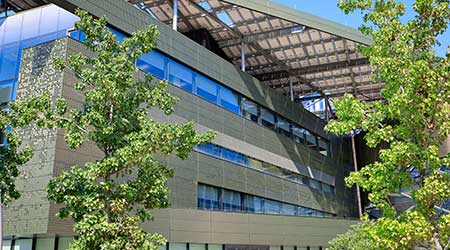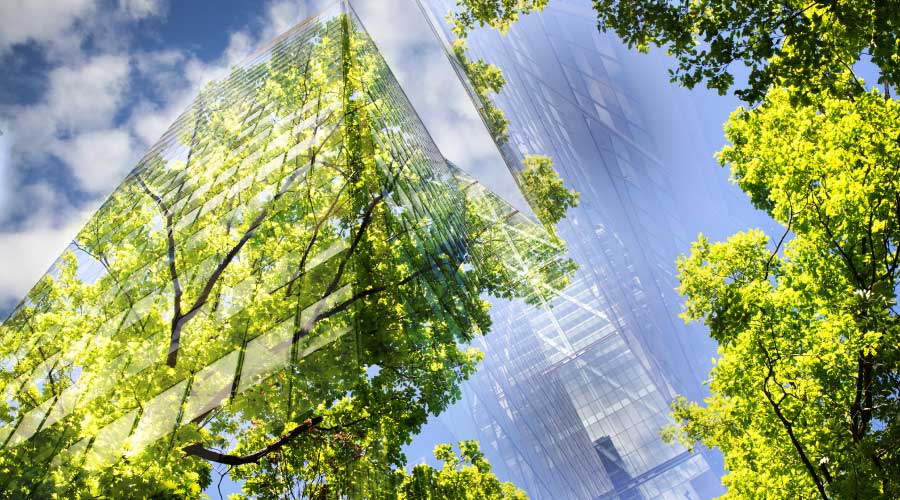Lamps & Ballasts: Moves from Good to Better
Lamps and ballasts today offer more energy efficiency and better illumination
Lighting technology has evolved. Again. Current fluorescent and metal halide lamps and ballasts are significantly different from their counterparts produced as recently as five to seven years ago. The result is a broad range of lighting solutions that deliver greater energy efficiency, better quality, and more flexibility and versatility than ever before.
“Advances in lamp and ballast technologies have allowed commercial lighting users to truly ‘have it all’ and benefit from the most energy-efficient, cost-effective, long-lasting and high-quality lighting systems to date,” says Susan Bloom, director of corporate communications for Philips Lighting and Advance. “These developments can reduce lighting costs by as much as 30 to 50 percent and total facility energy consumption and costs by up to 20 to 25 percent.”
The T8 Evolves
In recent years, enhancements such as improved phosphors and coatings, lower wattages, higher lumen packages, longer-life ratings and lower mercury content have boosted both the efficiency and performance of fluorescent lighting.
Consider today’s T8 fluorescent lighting systems. These energy-efficient lamps provide solutions for a wide range of traditional fluorescent applications. Introduced in the 1990s, T8 lighting systems using 32-watt fluorescent lamps driven by electronic ballasts have largely replaced older and less-efficient T12 lamp and magnetic ballasts. According to Bloom, this popular upgrade can reduce energy consumption and costs by 30 to 40 percent, driving two- to three-year paybacks and significantly improving the quality of light.
New T8 fluorescent lamps typically are categorized in one of two ways:
- Energy-saving models, ranging from 25 to 30 watts
- High-lumen, extended-life lamps, with at least 2,900 mean lumens and at least a 24,000 hour rated life.
When used with new high-efficiency electronic ballasts, total system wattage can be reduced more than 45 percent relative to the use of older T12 fluorescent systems driven by magnetic ballasts and by as much as 20 to 30 percent relative to the use of conventional T8 lamps and electronic ballasts.
“High-efficiency T8 technology just keeps getting better,” says Susan Anderson, manager of energy relations at OSRAM SYLVANIA. “We are on our seventh generation of high-efficiency T8 lamps. In recent years, we have optimized lumen output, lumen maintenance and lamp life to provide high lumen lamps — super T8 lamps — that can be paired with lower wattage/low ballast factor electronic ballasts to reduce energy usage while delivering appropriate light levels.”
It’s worth noting that the definition of “high efficiency” has meant different things to different manufacturers over the years. Some use it to describe the most efficient products and others to describe all electronic ballasts.
The Consortium for Energy Efficiency (CEE) has worked with NEMA to develop a definition of high-efficiency T8 ballasts, using a metric called ballast efficacy factor (BEF), expressed as ballast factor divided by input watts multiplied by 100. This was adopted as NEMA Standard BL 2-2007, covering electronic ballasts for use with 4-foot T8 lamps. This standard has become the qualification threshold for the NEMA Premium Ballast designation.
“It is believed this will promote the most efficient ballast options for end users and utility-rebate-program generic specs, creating a pull-through in the marketplace,” says John Strainic, general manager, global product management at GE Consumer & Industrial. “More than 25 utilities, for example, use CEE minimum performance levels in incentive programs.”
Typical savings from high-efficiency T8 systems range from 2 to 5 watts per ballast. High-efficiency ballasts are available with programmed start low (.71), instant start low (.77), normal (.87), normal high (1.00), or high (greater than 1.15) ballast factor options.
“The initial cost of high-efficiency ballasts can be 10 percent more than standard electronic ballasts,” Strainic says. “However, in terms of payback for a typical project, high-efficiency ballasts can immediately deliver 5 to 7 percent in energy cost savings.”
In an installation with two-ballast, four-lamp fluorescent fixtures on 10-by-10-foot centers (100 square-foot area), high-efficiency ballasts can add about $0.03-$0.06 per square foot to project cost but reduce annual operating costs by about $0.04 per square foot. This is based on assumed savings of $2 per ballast (or $1 per lamp) per year, Strainic says.
The newer fluorescent lamps also have higher lumens per watt and longer actual lamp life.
Four-foot lamps, such as 30-watt T8s and even 25-watt T8s, have become the norm in many 2-by-4 fixtures, reducing energy consumption and often improving color quality.
“The newest 4-foot lamps have even longer life to help further reduce maintenance costs,” Anderson says.
Taking Off with T5
High-efficiency T5 systems offer an alternative to T8 and traditional HID. Delivering high-lumen output, new T5 HO (high output) and T5 VHO (very high output) fluorescent lamps provide an energy-efficient option for a variety of industrial and high-bay applications previously dominated by HID technology. The smaller diameter of T5 lamps contributes to overall luminaire efficiency.
“Compared to 400-watt universally mounted metal halide lamps, T5 VHO lamps, for example, can save up to 40 system watts per fixture and deliver as much as 75 percent longer lamp life, as well as associated reductions in maintenance and relamping costs,” Bloom says.
Amalgam technology helps these systems deliver greater light output over a wider temperature range. The systems are optimal for such applications as unconditioned warehouses, shop floors, factories and big box retailers.
“T5 systems offer an outstanding alternative to HID technology in industrial spaces that run either extremely hot or extremely cold,” Bloom says, noting that T5 technologies provide white light without color shift, as well as the benefit of controllability through dimmers or occupancy sensors.
“The applications for T5 HO and T5 VHO lamps are rapidly expanding,” she says. “These solutions give industrial users the best of both worlds — the long life and energy-efficient benefits that fluorescent technology has to offer with no sacrifice in light output.”
Metal Halide Advances
On the metal halide scene, the industry has moved from older, probe-start technology to pulse-start technology. The federal Energy Independence and Security Act (EISA) of 2007 regulates the efficiency of ballasts used in metal halide luminaires manufactured as of Jan. 1, 2009. As a result, most new luminaires will use pulse-start technology. Pulse-start technology improves lamp performance, particularly in the area of lumen maintenance over lamp life.
“As lumen maintenance improves, lower wattage systems can be used to achieve the same maintained light levels,” Anderson says. “The net result is reduced energy use.”
For example, Strainic says, traditional 400-watt metal halide systems consume 458 watts of energy per fixture. The lamps have 65 percent lumen maintenance, meaning the light level decreases significantly over time. More efficient pulse-start and ceramic metal halide systems, especially with electronic ballasts, can reduce that consumption to 345 watts, using 320-watt lamps or 250, using 250-watt lamps.
Additionally, ceramic metal halide are pushing into traditional halogen applications. “Today’s ceramic metal halide lamps have color-rendering quality that makes them acceptable in many applications, including retail, museums and lobby lighting.“ Anderson says. “Their lower system wattages and longer lamp lives make them energy- and cost-efficient alternatives to line-voltage halogen systems.”
Looking into the Future
Lighting will continue to become more and more efficient, with rapid changes happening across the market.
“Building codes, energy legislation and new technologies, such as solid-state lighting, will drive state and federal legislation and specifications to these energy-efficient, high-quality lighting solutions,” Strainic says. “Solid-state lighting is the future, however. Over the next decade, we’ll see a steady growth in LED lighting.”
Highly efficient LEDs give off very little heat and can last up to 25 years or more, compared to the 1-year or shorter life expectancy of many commercial incandescent bulbs. With the added benefits of efficiency, brightness, color consistency and low maintenance requirements, LEDs are increasingly popular as replacements for incandescent lamps in such applications as illuminated exit signs, traffic signals and specialty applications like retail freezers.
“LEDs have become the focus of a great deal of investment and research and development by both lighting manufacturers and the government,” Bloom says. “This is based on the promise they hold for significantly reducing global energy consumption. LEDs have been hailed by many experts as ‘the future of lighting’ and are expected to continue to penetrate a broad range of general lighting applications over the next 5- to 10-year period.”
While the future offers even more energy-efficient lighting options, true savings, as well as other benefits, can be achieved by making even small changes in lamp and ballast options within a facility today, experts say.
“According to a U.S. Department of Energy survey, more than 70 percent of existing buildings have not been retrofitted with more efficient lighting or HVAC systems,” Anderson says. “Our country’s greatest opportunity for reducing energy use is in retrofitting existing buildings with more energy-efficient systems. Lighting systems are the easiest to cost justify.”
Related Topics:















